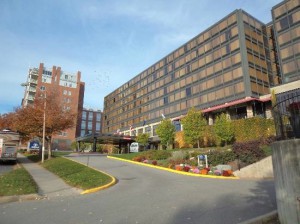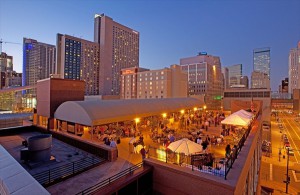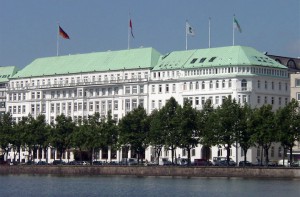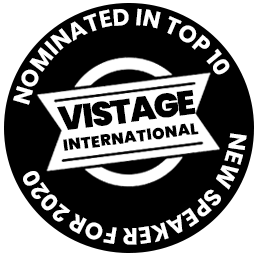Examples of applying curiosity and Change Leadership in business – that reaped real results
Change Leadership Example #1:
Wisdom versus innovation – which carries the day? (An important lesson learned, in the middle of the jungle)
 We were literally in the middle of the jungle, working hard to open the brand-new Hotel Internacional at Iguazú Falls, Argentina. I had just presented a new idea to my boss, who, in response, grabbed his white sideburns and shouted: “See this? This is wisdom!” He fired me on the spot. This event forged my leadership style – and my lifelong commitment to being open to fresh ideas.
We were literally in the middle of the jungle, working hard to open the brand-new Hotel Internacional at Iguazú Falls, Argentina. I had just presented a new idea to my boss, who, in response, grabbed his white sideburns and shouted: “See this? This is wisdom!” He fired me on the spot. This event forged my leadership style – and my lifelong commitment to being open to fresh ideas.
Here’s what happened …
As a college student and employee in the hospitality business, I was helping to open the brand-new Hotel Internacional. This high-end resort is located on the rim of spectacular Iguazú Falls, on the border between Argentina, Brazil, and Paraguay.
We were so remote, the workers hired from local villages had never experienced amenities like air conditioning or elevators. We had only one telephone line to connect to world – when it worked.
On July 9, Argentina celebrates Independence Day, which also kicks off the winter holiday. It was imperative that the hotel be ready to open – and booked with guests. However, the telephone lines were often down. People could not reach us to make their reservation, and we were not creating an inventory of full rooms.
I proposed a creative solution to my boss. The conversation went like this…
André: “We should allow Buenos Aires to control our inventory and send burst transmissions when the telephone line is available.”
Manager: “No. You never give up control of inventory. If they overbook us, we have a big problem – we are in middle of the jungle.”
True, I thought, but we can’t afford to give up revenue! I believed in my idea, and I knew it was the right thing to do. So I went over his head and spoke to the general manager, who loved the suggestion and immediately implemented it.
When I reported back to my boss, he fired me! He grabbed his long white sideburns, tugged them fiercely, and shouted: “See this? This is wisdom!”
His point: Wisdom is what carries the day. But with this attitude, he discounted valuable input!
I believe CURIOSITY, CREATIVITY, and INNOVATION trump wisdom.
Yes, wisdom plays an important role in everyone’s job and in every business. But don’t let wisdom solely rule the day. Be curious and ask questions. Look for new ideas and be open to hearing new ideas from others.
Empower your employees and teammates to be creative and – this is key – listen to them when they come to you. Start a dialog and let the best idea emerge.
This experience forged my leadership and communication style.
Throughout my career, I have always recognized the importance of listening to others to truly hear and evaluate fresh ideas. There are new ways of thinking out there, and we must be open to hearing them – or we get stuck like my grizzled boss.
In this case, the nearest town with hotels was 20 miles away. If we had not been able to book rooms, we would have frustrated guests who hoped to enjoy an incredible vacation experience at the rim of majestic Iguazú Falls in a new resort hotel. As it turned out, we implemented my procedure, sold out, and had a successful opening. Also, I was re-hired the next day!
This is the essence of Change Leadership.
Unlike “change management,” when you create a culture of Change Leadership – a culture based on curiosity – you create a culture of people who are inquisitive, people who wonder “what if?” You look for opportunities to innovate, to be creative.
You create a workforce of people who:
- Actively seek purposeful change
- Readily adapt to environmental change
- Can respond to (or initiate!) disruptive change for your organization – or your entire industry
Change Leadership Example #2:
Asking questions and being willing to make a change pays offs with nearly 300% revenue increase
 I arrived as the new General Manager for the downtown Radisson Burlington Hotel in Vermont in the autumn of 1988 – the height of “leaf-peeping” season. Throughout this key season, I noticed our hotel was being filled by tour buses – which book months in advance at significantly reduced rates – instead of individual tourists who pay full rates during this peak season.
I arrived as the new General Manager for the downtown Radisson Burlington Hotel in Vermont in the autumn of 1988 – the height of “leaf-peeping” season. Throughout this key season, I noticed our hotel was being filled by tour buses – which book months in advance at significantly reduced rates – instead of individual tourists who pay full rates during this peak season.
Meanwhile, the local Chamber of Commerce was asking people to open their homes to rent rooms to tourists, because all hotels were full!
I began asking questions and quickly discovered that our 256-room hotel had been relying on the “bird-in-the-hand” approach. The previous management approach was to book low-rate rooms to tour-bus companies in advance – as opposed to holding the rooms for individual tourists who were sure to come during this critical revenue-generating season.
The longstanding tradition to rebook bus tours was comfortable and secure. But we were leaving money on the table!
How could we approach this differently – and bring in more revenue?
For the following leaf-peeping season, I instructed my salespeople not to rebook ANY tours. This severely upset the tour operators, impacted the salespeople’s commissions, and left our books way behind “pace.” This approach felt risky, since it relied on the history of demand without any assurance of a higher rate or occupancy guarantee.
This strategy also upset corporate headquarters! The vice president of sales called in distress over my decision. He was receiving calls from unhappy tour operators, and he was extremely nervous about this new approach.
I was told in no uncertain terms that I was gambling with my job.
The result? Gross revenue increased 283% over the previous season.
As we approached the end of summer, our books showed only 30% occupancy, but reflected the SAME revenue we would have received with 100% occupancy of bus tours. Clearly, holding out for the peak-season tourist rate had already paid off!
By the end of leaf-peeping season, our gross revenue had skyrocketed 283% over the previous year – without sales commissions and with higher revenue from food and beverage sales. A bonus: My staff was delighted with the better tips from individual travelers.
This demonstrates my belief in the old saying: If you always do what you always did, you will always get what you always got.
It took vision, study of the market and yes, a gamble, to change the course. Whether you are a leader or individual contributor, the key to a Change Leadership mentality is asking questions, being proactive, and staying ahead of the curve.
In other words: Be curious! The results may amaze you!
Change Leadership Example #3:
Asking questions (and more questions!) of customers, staff members, and vendors uncovers the real issue – and the right solution
 When I arrived as the new CEO & General Manager of the Denver Athletic Club, I soon learned that many club members – avid users of the pool – were unable to swim due to rashes from chemical reactions. Swimmers were leaving our downtown pool and choosing to swim elsewhere.
When I arrived as the new CEO & General Manager of the Denver Athletic Club, I soon learned that many club members – avid users of the pool – were unable to swim due to rashes from chemical reactions. Swimmers were leaving our downtown pool and choosing to swim elsewhere.
To me, this was startling news, since it was directly eroding our membership rolls. When inquiring with my staff, I was told that 5% of the population gets rashes in pools. Period. End of discussion.
This sounded plausible, and I could have ended my inquiry then and there. However, I was intrigued why swimmers were getting rashes in OUR pool, but not at the other facilities where they had begun swimming.
So I started asking questions.
I talked with our chemical supplier, who immediately reinforced the 5% rule. Then he added this key point: Our pool was failing to get rid of the chloramines (a byproduct of chlorine), so we were adding acetic acid. This, in turn, produces ammonia, which is known to cause rashes and respiratory ailments in a certain percent of the population.
Since I realized the importance of removing chloramines, my inquiry could have ended there.
Next, I talked with a pool designer. I learned that interior pools, where the action of the sun and evaporation of chemicals is minimized, must have an effective “turn” of air to remove the chloramines that have become airborne, thereby preventing them from re-precipitating into the pool. Additionally, chloramines tend to bubble on top of the pool, so a piece of equipment called a “skimmer” combined with an active filtration system will help remove this harmful chemical.
Since I had noticed the high humidity of the pool area and its detrimental effect on metal surfaces, this led me to ask how many times an hour we were “turning” the air. To my amazement, I was told we were NOT “turning” the air! Why? Because homeless people had been sleeping in a small alcove where the pool exhaust dumped this nice, warm air and protected them from Denver’s frigid winter temperatures.
This situation had influenced the decision to shut off the ventilation system! It was believed that this would save significant costs to maintain the pool, while encouraging the homeless people to sleep elsewhere.
This news astounded me: With no ventilation, how could we effectively remove harmful chemicals from the pool environment?
To further this maze, I had noticed the pool was never filled to its ideal level. So I asked more questions. I found out that a $1500 auto-leveler had broken several years before and had not been replaced. By refilling the pool manually, it was felt that we did not need to spend the money to replace this part. However, this meant the skimming process (important for removing chemicals that bubble to the surface) was not consistent or effective.
What was the full story, in a nutshell?
Without “turning” the air, we were not removing the chloramine-filled air. And with no auto-leveler and ineffective skimming, we were failing to properly filter harmful chemicals off the surface of the water.
What was the solution?
I instructed my staff and the vendor to turn on the ventilation system and install a new auto leveler. We also stopped using acetic acid, which is known to cause rashes.
What were the results?
With an expense of only $1500, our swimmers returned to the pool. We salvaged many memberships and reinforced our reputation as a great place to swim in downtown Denver.
What’s the bottom line?
Do not automatically accept the standard answer! Be curious and take time to ask questions about your company’s practices. Listen carefully to the answers. You can actively seek purposeful changes – some small, some large – that directly impact your customers, your company, and your bottom line!
Change Leadership Example #4:
Allow creativity and innovation to flourish – at all levels in your organization
 Early in my career, at the Hotel Vier Jahreszeiten in Hamburg, Germany, I had worked my way up (through a surprising number of jobs) from pot washer to busboy.
Early in my career, at the Hotel Vier Jahreszeiten in Hamburg, Germany, I had worked my way up (through a surprising number of jobs) from pot washer to busboy.
As a busboy for this grand hotel in the European tradition, part of my responsibilities covered “side work,” including polishing silver candlesticks – and there were a lot of candlesticks in this luxury hotel!
Initially, I followed the longstanding, ingrained process to clean and polish every candlestick. One day, I went to my boss, the maitre d’hotel (headwaiter).
I said, “I have an idea …”
He blurted out, “Stop right there. I don’t pay you to think, I pay you to do.”
“Wow,” I thought. “I’m not just manual labor. I have a brain between my ears. I can bring fresh – and cost-saving – ideas to you. And you won’t even listen.”
Unfortunately, I encountered this close-minded attitude throughout my career. As a leader, I have always encouraged every employee in my organization to apply creative, innovative thinking to their jobs. Creativity and innovation must flourish at all levels! This directly impacts employee engagement and can significantly impact the bottom line.


